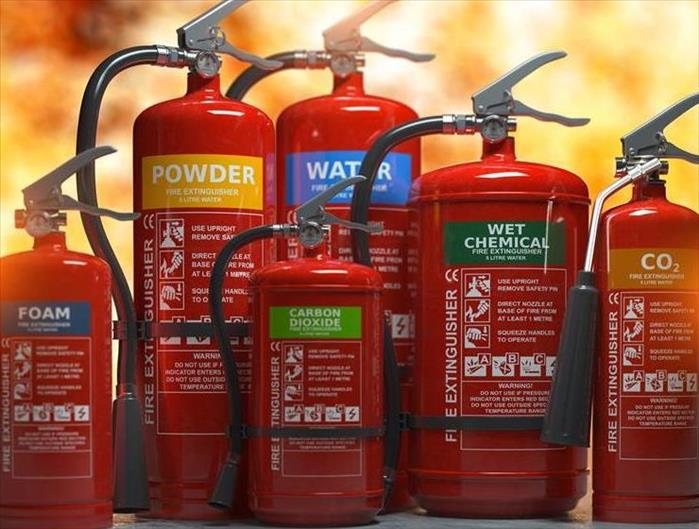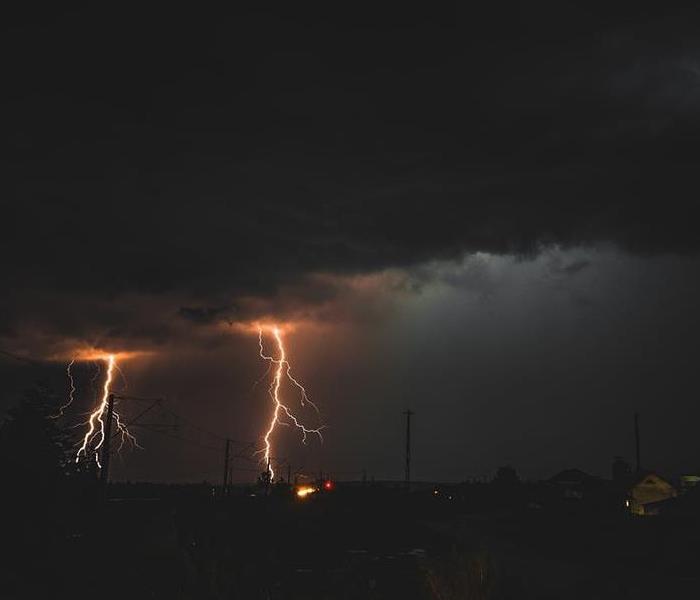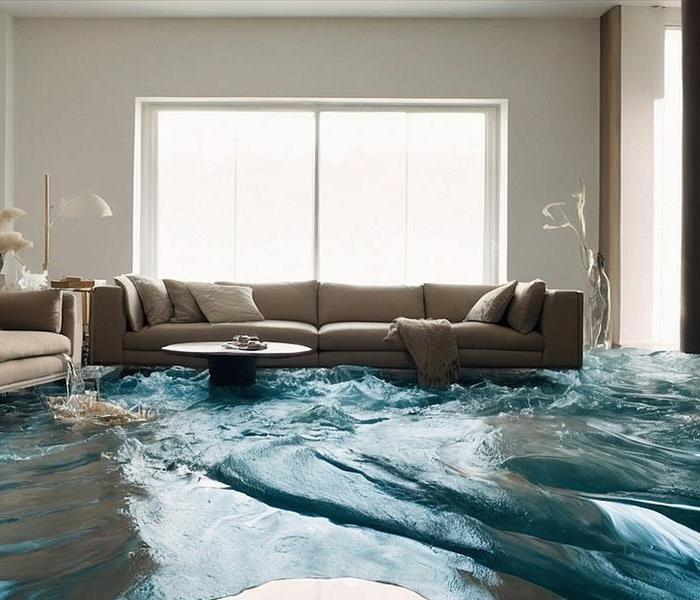How To Choose The Right Extinguisher
5/15/2024 (Permalink)
Keeping a fire extinguisher in your home can save you and your property from a small fire. However, there is a wide selection of fire extinguishers to choose from and they are all intended to be used for different fires.
Extinguisher Classes
Each class of extinguisher fights a different type of fire:
Class A: Wood, paper and trash
Class B: Grease, oil-based liquids and gasoline
Class C: Electrical equipment
Class D: Flammable metals
Class K: Animal and vegetable oils used in cooking
Household extinguishers are rated A, B or C. On the label, the numbers that precede the letters give the rating of the extinguisher's effectiveness against that type of fire. An extinguisher with a 4-B rating, for example, is more effective against a grease fire than one rated 2-B. Higher effectiveness usually means a higher-priced extinguisher. There is no number designation for Class C.
Extinguisher Sizes
You can choose your extinguisher size based on where you will use it. A 5-pound extinguisher is suited for a typical home fire and is easy to pick up and use. A 10-pound fire extinguisher is a good choice for the garage, where a fire may grow before you see it. You can also find stove-top extinguishers that mount above the range.
Best Extinguisher Locations
Safety experts recommend you keep an extinguisher on each floor of your home for maximum fire preparedness. The kitchen is an ideal place because of the enhanced risk of fire in that room. Keep the extinguisher where household members can reach it quickly and easily. The best location is near an exit if the fire gets out of control and you must evacuate.
Equipping your home with the right fire extinguisher can save your home and your family. It is better to be safe than sorry.
Storm Safety Tips
5/15/2024 (Permalink)
Depending on the season and your location, your business may be vulnerable to damage from intense rain storms, tornadoes or hurricanes. Following several key safety guidelines can help you protect your building and safeguard the wellbeing of your staff.
- Keep Trees Trimmed
Tree branches can become dangerous objects during strong winds. To minimize the risks of broken windows and roof damage, you should keep trees adjacent to your property neatly trimmed and routinely remove dead branches.
- Stay Away From Windows and Skylights
Flying debris can easily shatter windows and skylights. As a precaution, everyone should move away from these structures during a severe storm with high winds or hail.
- Elevate Essential Equipment
A significant rain storm can increase the risk of flooding. If floodwaters enter your building, essential equipment, including components of your HVAC system, may be vulnerable to water damage. To alleviate this concern, you should elevate important devices off the floor.
- Move to an Internal Room
In the event of a tornado, seeking adequate shelter is essential. Your staff should promptly move to the basement or a windowless, interior room on the lowest level of the building.
- Avoid Using Electronic Equipment
Because cords conduct electricity, using electronic equipment during a thunderstorm can be dangerous. Staff should shutdown computers and avoid using phones until the storm has passed. As an added precaution, you should utilize surge protectors to safeguard vital equipment from potential damage.
- Inspect Your Roof
Hail and strong winds can wreak havoc on your building’s roof and cause damage that may lead to destructive leaks and potential mold contamination. For this reason, it’s a good idea to inspect your roof after any storm and promptly commence any necessary repairs.
A severe rainstorm can produce damaging high winds and cause extensive flooding. Taking proactive measures can help businesses avert serious injuries and minimize the risk of significant destruction.
What To Do When You Have Water Damage
5/8/2024 (Permalink)
Water damage can wreak havoc on your home or property. Water damage can occur from burst pipes, leaking roofs, storms, floods, and hurricanes. The consequences can be devastating, leading to structural damage, mold growth, and potential health hazards.
When facing these situations, it is best to contact a restoration company such as SERVPRO®. However, here are some simple actions you can take while you wait on a SERVPRO team to arrive at your home.
Turn off the Power
Attempt to safely switch off the electricity and gas to avoid electrocution and gas leaks. If unable to do so due to an extensive amount of water in the home, wait for a SERVPRO team to arrive and cut the power off.
Locate and Stop the Water Source
Identify where the water is coming from. If it is coming from a burst pipe or leaking appliance, turn off the water supply to prevent further flooding.
If the source of the water is external, such as a storm or flooding, do your best to divert or contain the water from further damaging your home and furniture.
Remove Excess Water
Use pumps, wet/dry vacuums, buckets, or towels to remove as much water as possible from the affected area. The faster you can extract the water, the better chance you have of preventing further damage and mold growth.
Move Belongings Out of Water
To prevent further damage to your furniture, move them to another room that is dry. If you have heavy furniture that you are unable to lift and move around, wait for a SERVPRO team to arrive to assist with moving the furniture.
SERVPRO also specializes in restoring any piece of furniture that has been damaged during the disaster.
Call your Insurance Company
Once you have done all the above, now is the time to contact your insurance company and investigate what is covered in terms of water damage. Document the damage thoroughly and file a claim with your insurance as soon as possible in order for you to get reimbursed for the costs of mitigation.
Dealing with water damage is a long and stressful process. Luckily, SERVPRO is available 24/7 with a team of certified professionals who are equipped with advanced equipment to resolve disasters like these.
SERVPRO, the only restoration company that makes “Like it never even happened” happen.

 24/7 Emergency Service
24/7 Emergency Service


